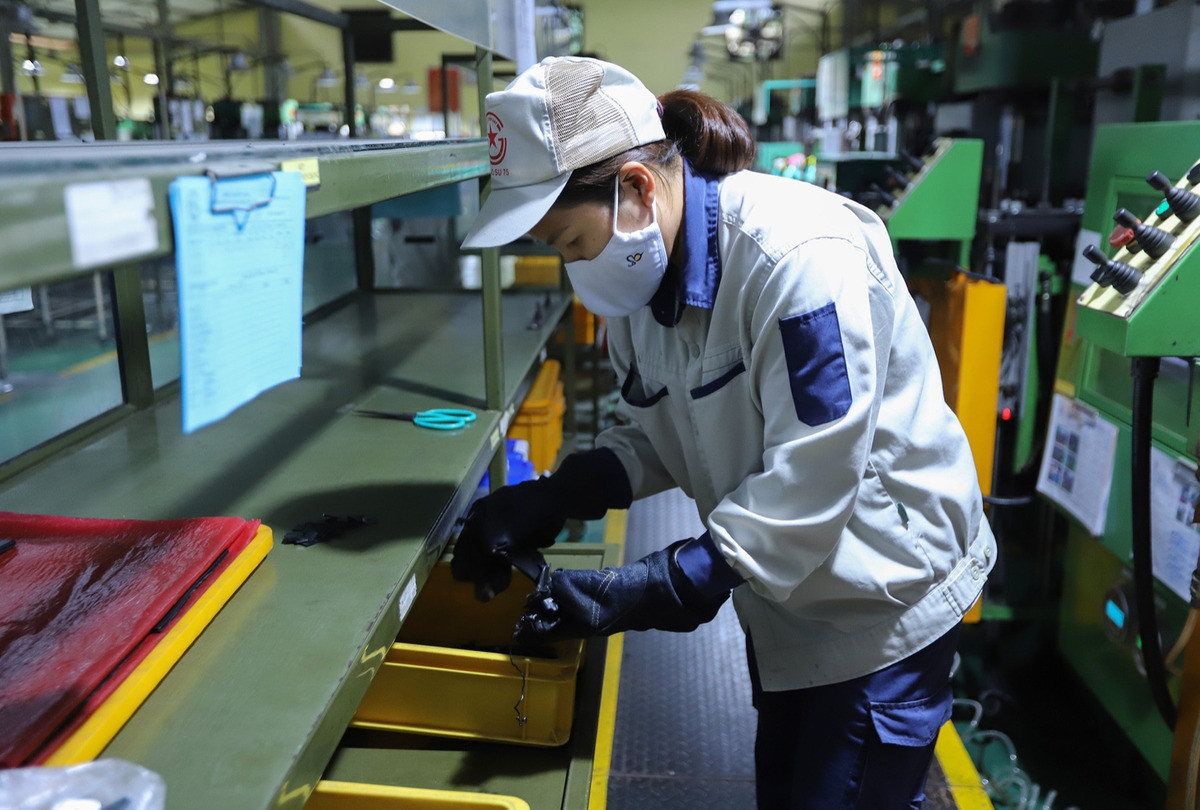
This has occurred because many businesses split the employees' income into various allowances and subsidies to reduce payments.
Nguyen Thu H has been working as a sales employee at a household goods manufacturing company for 15 years. In recent years, her actual monthly income has consistently been VND14–15 million, but her SI contribution is based on a salary of less than VND9 million.
Her SI contribution is calculated based on the official salary paid by the company, while additional income is listed as allowances and supplementary bonuses to “evade” SI contributions.
Under the current laws, employees have to pay an eight percent rate, while employers contribute 17.5 percent to the social insurance fund.
For H, despite her high income at work, her future pension will be low, because the SI contributions she pays now is low.
“In principle, high SI contributions will lead to high pensions. Therefore, I am afraid that my pension in the future won’t be high enough to live on,” she complained.
An officer from the HCMC Labor Federation said that except for state-owned enterprises and some private companies that pay SI based on workers’ actual incomes, most of the other businesses circumvent regulations by paying allowances, not salaries, to reduce the SI contributions they have to pay.
According to analysts, this is also one of the reasons why workers have preferred lump-sum social insurance withdrawal recently.
According to HCMC Social Insurance, current laws already specify which payments are subject to SI contributions and which are not, and the SI agency has intensified inspections over the payments. However, many businesses still deliberately seek to reduce contributions they have to pay.
In most cases, workers and employers only pay SI contributions based on the minimum wages set by the government annually (minimum wages are different for different regions).
In reality, at many units and businesses, numerous allowances and supplements are paid to workers beyond their base salary, under various names such as allowances and bonuses. Since the allowances and bonuses are not listed as ‘salary’, they are not counted when calculating SI contributions.
Meanwhile, the 2024 Social Insurance Law stipulates that the monthly wage used as the basis for mandatory SI contributions for workers are determined by employers, including salaries for their jobs or titles, wage allowances, and other regular, stable supplements agreed upon for each pay period. This makes it difficult to determine which payments must be included in SI contributions.
Pointing out that the base wage for SI contribution calculation is much lower than workers’ actual income, Vietnam Social Security (VSS) said many businesses do not fully comply with regulations. They tend to split workers’ income into various allowances and subsidies to avoid contributions, but VSS lacks the legal basis to force businesses to include these amounts.
As a result, in many places, workers’ SI contributions account for only 50–60 percent of their actual incomes, affecting their benefits, especially retirement pensions.
Stricter oversight
A HCM City Labor Federation representative suggested that in order to have contributions truly reflect workers’ actual incomes, state management agencies need to strengthen inspections to ensure employers’ observation of the laws.
It is necessary to strictly control businesses’ payrolls to ensure that businesses don’t have dual payrolls (including a payroll to show to VSS, and a payroll with actual figures for businesses’ accountancy).
According to a labor expert, in the long term, data about workers’ wages must be linked to a data-sharing system between workers’ income records and the SI agency’s database to help verify workers’ actual income for SI contributions.
By cross-checking data for monthly incomes received by workers from businesses with their SI contribution payments, it will be possible to ensure accurate and sufficient SI collection from employers.
Additionally, workers themselves must recognize this as their legitimate right and ensure they contribute correctly and fully to the SI fund to safeguard their benefits.
At the press briefing on the afternoon of January 14, Do Ngoc Tho, Head of the Social Insurance Implementation Policy Department under VSS said that currently, there are nearly 3.4 million people nationwide receiving monthly pension and social insurance benefits.
By the end of December 2024, the average pension was VND7 million per month, including the armed forces. If we only considered the civilian sector, people's pensions would be lower.
Vu Diep